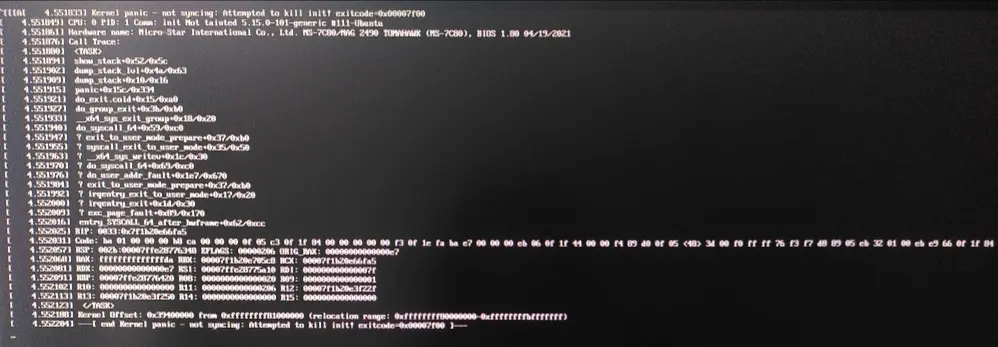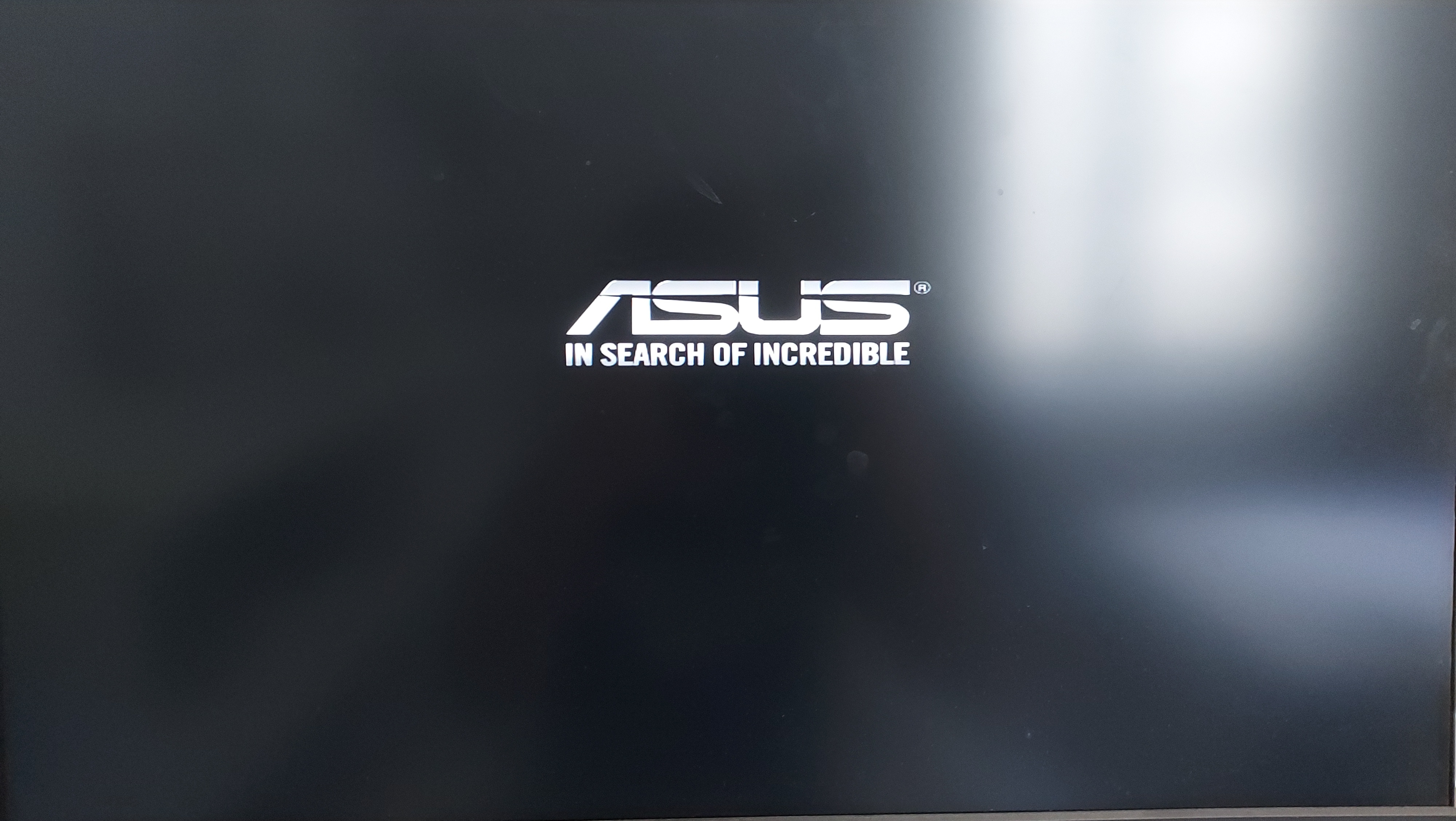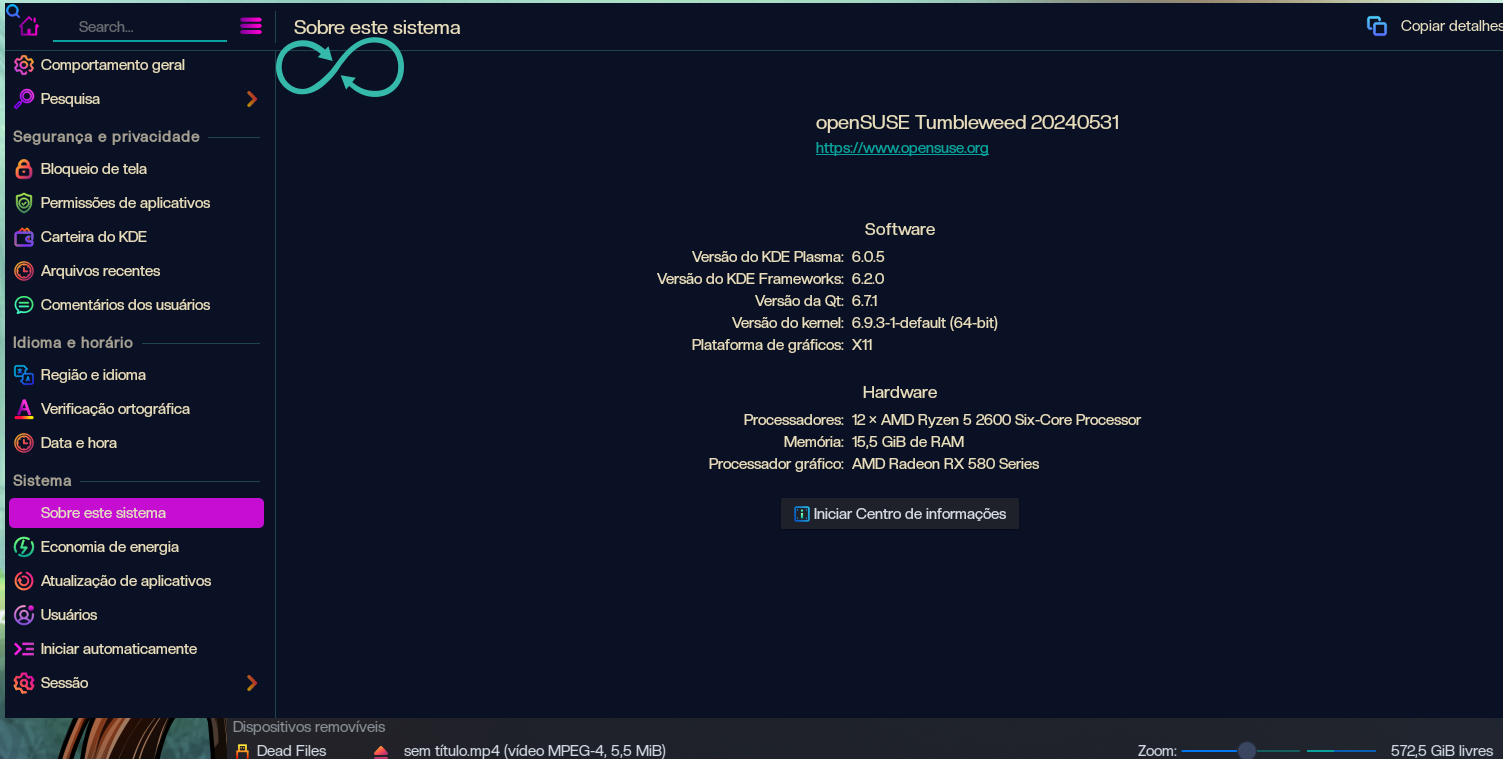Since about Plasma 6 onward I've been getting system restarts when attempting to play back video files and/or seek through them.
Kernel 6.5.0-41
KDE neon 6
Plasma 6.1.2
Qt 6.7.0
Ryzen 7 3700x CPU
AMD R9 390 GPU
16GB DDR4 RAM
The system will crash and reboot when:
- Attempting to play any video with an mp4 container (mpv and vlc tested)
- Attempting to seek with the mouse while playing most videos (mp4 and matroska)
- Scrolling too fast in a file manager
- Clicking and dragging to resize various windows (terminal, browsers, etc)
The system performs fine when:
- Playing videos in a webm container
- Playing videos in software like avidemux, kdenlive, gwenview, etc.
- Streaming video in a web browser
The issue has persisted through these toubleshooting measures:
- Update to latest BIOS firmware
- Switching between Wayland and X11
- Substitution of the PSU to a brand new unit
My assumption so far is that it's not hardware related. Currently I suspect it's Plasma. Below is the journal output of records around one such crash time of 5.19-5.20pm:
<journalctl /usr/bin/plasmashell>
Jul 13 17:19:21 pcname plasmashell[1680]: kde.plasmashell: Aborting shell load: The activity manager daemon (kactivitymanagerd) is not running.
Jul 13 17:19:21 pcname plasmashell[1680]: kde.plasmashell: If this Plasma has been installed into a custom prefix, verify that its D-Bus services dir is known to the system for the daemon to be activatable.
Jul 13 17:19:21 pcname plasmashell[1680]: kde.plasmashell: Aborting shell load: The activity manager daemon (kactivitymanagerd) is not running.
Jul 13 17:19:21 pcname plasmashell[1680]: kde.plasmashell: If this Plasma has been installed into a custom prefix, verify that its D-Bus services dir is known to the system for the daemon to be activatable.
Jul 13 17:19:22 pcname plasmashell[1680]: kf.plasma.quick: Applet preload policy set to 1
Jul 13 17:19:22 pcname plasmashell[1680]: file:///usr/share/plasma/plasmoids/org.kde.desktopcontainment/contents/ui/main.qml:195:25: QML FolderViewDropArea (parent or ancestor of QQuickLayoutAttached): Binding loop detected for property "minimumWidth"
Jul 13 17:19:22 pcname plasmashell[1680]: Toolbox not loading, toolbox package is either invalid or disabled.
Jul 13 17:19:24 pcname plasmashell[1680]: file:///usr/share/plasma/plasmoids/org.kde.plasma.private.systemtray/contents/ui/main.qml:162:21: QML KSortFilterProxyModel: Binding loop detected for property "sourceModel"
Jul 13 17:19:24 pcname plasmashell[1680]: file:///usr/share/plasma/plasmoids/org.kde.plasma.private.systemtray/contents/ui/main.qml:162:21: QML KSortFilterProxyModel: Binding loop detected for property "sourceModel"
Jul 13 17:19:24 pcname plasmashell[1680]: qt.dbus.integration: Could not connect "org.cups.cupsd.Notifier" to PrinterFinishingsChanged(QString, QString, QString, uint, QString, bool) :
Jul 13 17:19:24 pcname plasmashell[1680]: qt.core.qobject.connect: QObject::connect: No such signal Solid::Backends::Fstab::FstabStorageAccess::repairRequested(QString) in ./src/solid/devices/frontend/storageaccess.cpp:23
Jul 13 17:19:24 pcname plasmashell[1680]: qt.core.qobject.connect: QObject::connect: No such signal Solid::Backends::Fstab::FstabStorageAccess::repairDone(Solid::ErrorType, QVariant, QString) in ./src/solid/devices/frontend/storageaccess.cpp:24
Jul 13 17:19:24 pcname plasmashell[1680]: kameleon supported false
Jul 13 17:19:24 pcname plasmashell[1680]: kameleon enabled true
Jul 13 17:19:24 pcname plasmashell[1680]: qml: SystemTray ItemLoader: Invalid state, cannot determine source!
Jul 13 17:19:24 pcname plasmashell[1680]: QFont::setPointSizeF: Point size <= 0 (0.000000), must be greater than 0
Jul 13 17:19:24 pcname plasmashell[1680]: error getting max screen brightness via dbus: QDBusError("org.freedesktop.DBus.Error.UnknownObject", "No such object path '/org/kde/Solid/PowerManagement/Actions/BrightnessControl'")
Jul 13 17:19:24 pcname plasmashell[1680]: error getting max keyboard brightness via dbus QDBusError("org.freedesktop.DBus.Error.UnknownObject", "No such object path '/org/kde/Solid/PowerManagement/Actions/KeyboardBrightnessControl'")
Jul 13 17:19:24 pcname plasmashell[1680]: org.kde.klipper: Invalid or non-local url for preview: QUrl("mtp:/Pixel 5/Internal shared storage/Tempfold/archive.zip")
Jul 13 17:19:25 pcname plasmashell[1680]: org.kde.pulseaudio: No object for name "alsa_output.usb-VIA_Technologies_Inc._Audinst_HUD-mx2-00.analog-stereo.monitor"
Jul 13 17:19:27 pcname plasmashell[1680]: file:///usr/share/plasma/plasmoids/org.kde.plasma.keyboardindicator/contents/ui/main.qml:61:13: Unable to assign [undefined] to bool
Jul 13 17:22:17 pcname plasmashell[1653]: kde.plasmashell: Aborting shell load: The activity manager daemon (kactivitymanagerd) is not running.
Jul 13 17:22:17 pcname plasmashell[1653]: kde.plasmashell: If this Plasma has been installed into a custom prefix, verify that its D-Bus services dir is known to the system for the daemon to be activatable.
Suggestions for next steps would be welcome. Is it worth considering a rollback to the previous/older Plasma versions? Assuming Plasma doesn't like my DAC or keyboard or whatever, is it worth substituting or removing USB devices?


